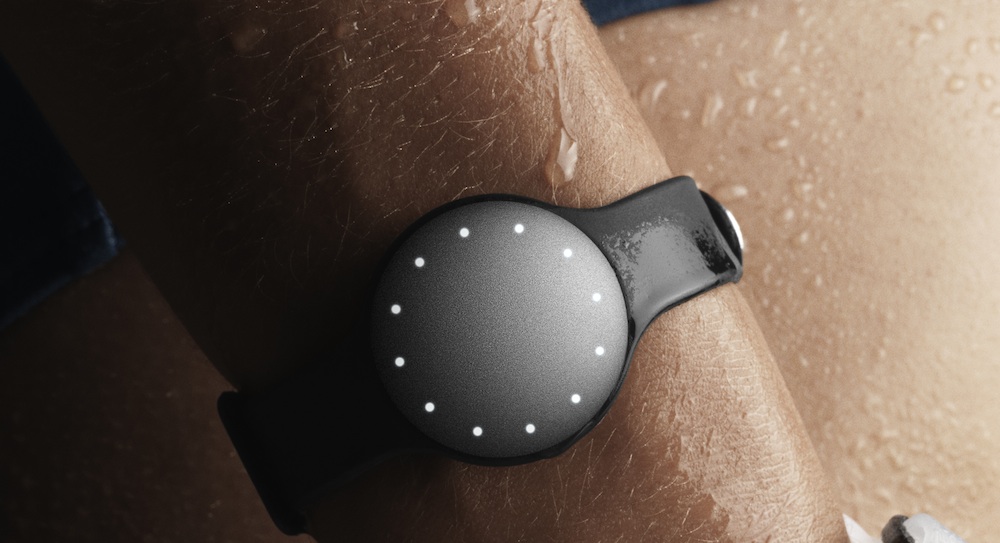
I wore the Misfit Shine for a week, to test how well it performs within the exploding marketplace of fitness trackers — devices that record and document users' steps, calories and sleep. The Shine stands out from other trackers because it can be worn in the water, and has a long battery life. Its sleek design — along with the option to wear it as a wristband, belt clip or necklace — make it a more fashionable alternative to other trackers. With a price of $119.95, it's a midline investment — about as expensive as the Fitbit Force ($129.95) but considerably cheaper than the B1 Basis ($169.99). Here's how the Shine performed.
Overall Rating: 5.4/10
The Shine's sleek, comfortable design; its long battery life; and its water-friendliness will make it a tempting option for people who swim regularly or value fashion. But stats lovers and die-hard fitness junkies may find the app too confusing and the data it provides too sparse to be motivational.
Design/Comfort: 8/10
The Shine is a matte, aluminum disc as big as a quarter. The disc can be slipped into a simple wristband, a magnetic device that clips onto clothes or even as a necklace. I found the wrist attachment to be sturdy, easy-to-clean and extremely comfortable. The magnetic clip was sturdy and seemed unlikely to fall off.
To sync the Shine with its app on your smartphone, the directions say you need to tap the Shine against the phone. However, I noticed it often synced automatically when my phone was simply near my wrist. Being able to use it in the pool was impressive, and its water-friendliness meant it was also easier to keep clean after a sweaty workout.
User-friendliness: 4/10
The Shine's smartphone app was bare-bones, and not very intuitive to use. One icon, which looked like an image of the globe, doesn't do anything. And the app has no labeled menu to display the key metrics, such as miles walked or calories burned. Instead, I had to swipe across the screen to get that information. Additionally, the Shine lacks a Web app, so using the app on a smartphone is the only option.
Get the world’s most fascinating discoveries delivered straight to your inbox.
You can check your progress without opening the app — when you tap Shine's face, a different number of times, blinking lights flicker on to show you the time of day, your progress toward daily goals and the start of a new activity. Reading these lights is almost like learning a new code — I often had to reread the FAQs on the Misfit website to interpret them. More problematic, the Shine had trouble correctly sensing my taps, which meant a fairly vigorous swim was tracked as a "kinda active" walking session.
Shine takes a standard watch battery that the company says can run for four months without needing to be recharged. When I got mine, the battery was dead, despite having been inserted less than four months beforehand. Still, even a somewhat shorter battery life is miles ahead of other fitness trackers that need to be recharged daily or weekly.
Value of Information: 4/10
The Shine provides basic data, but it lacks detail. For instance, it doesn't allow users to track food or calorie consumption, or to manually tweak incorrectly labeled data. Like the Nike FuelBand, the Shine lets users earn points, and tracks the total points earned, but the app doesn't explain how those points correspond to a healthy lifestyle.
The sensors autodetect individual workout sessions, creating discrete icons with points earned for "pretty active" or "kinda active" workout sessions. But those vague terms are not explained in the app or on the website, and you can't translate the points from an individual workout into miles or calories burned.
Like many other trackers, the Shine seems to mistake sitting for sleep. In order to get an accurate measure of your sleep, you have to label the activity of "sleep" just before bedtime and make sure to tap the device three times. Shine also overestimated the distances I walked — a problem that plagues many activity trackers.
The device also doesn't track elevation changes, as trackers such as the FitBit Force do. Given the hills in San Francisco, it would have been nice to get credit for a few of those climbs.
Enjoyment/Inspiration: 5.5/10
Wearing the Shine did motivate me to break out a swimsuit in the winter, but the lack of granular data made it less inspiring for actually changing my routine. Other trackers offer badges or motivational messages to get people moving, and although the Shine doesn't, I found I didn't miss this aspect. Not having to plug in the device at all was motivation enough to wear it every day, and having it sync so easily with the phone led me to check it fairly frequently.
Editor’s Note: In February 2015, we changed the rating system we use in our fitness tracker reviews from a 5-star system to a 10-point system. Not all of our ratings were a straight conversion (i.e. 2/5 stars = 4/10 points). Instead, we adjusted some of them in order to give our readers a better idea of how these devices perform in relation to each other.
Follow Tia Ghose on Twitter and Google+. Follow LiveScience @livescience, Facebook & Google+. Original article on LiveScience.

Tia is the editor-in-chief (premium) and was formerly managing editor and senior writer for Live Science. Her work has appeared in Scientific American, Wired.com, Science News and other outlets. She holds a master's degree in bioengineering from the University of Washington, a graduate certificate in science writing from UC Santa Cruz and a bachelor's degree in mechanical engineering from the University of Texas at Austin. Tia was part of a team at the Milwaukee Journal Sentinel that published the Empty Cradles series on preterm births, which won multiple awards, including the 2012 Casey Medal for Meritorious Journalism.


